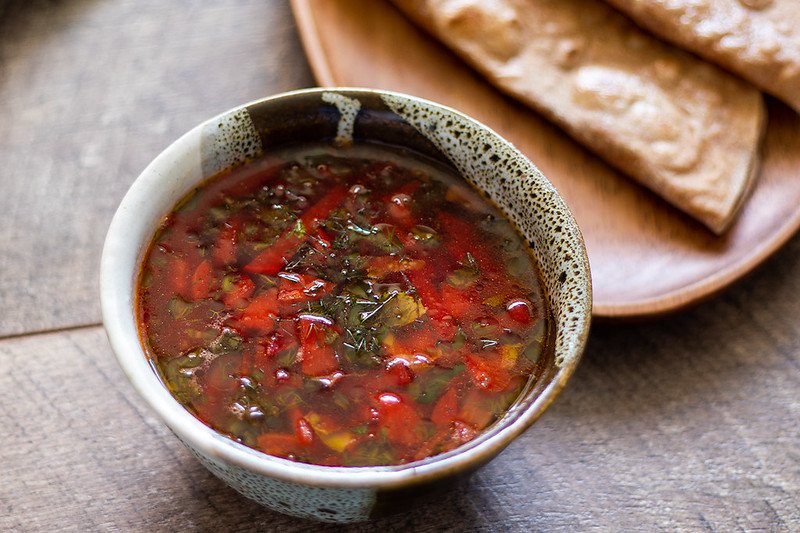
The seasons are slowly beginning to shift. You may be experiencing longer days and shorter nights or just the opposite, depending on where you live. In either case, these natural seasonal transitions present an opportunity to nourish and support the digestion.
Borscht is a hearty beetroot soup, enjoyed as a staple all over Eastern Europe. Vibrant in color, it's a satisfying and augmenting part of a meal. In this recipe, the beets are sweet and filling while the herbs and green veggies are extractive and cleansing.
Traditionally, white potatoes are used, as well as onions and garlic. However at Hale Pule nightshades and alliums are avoided because of their rajasic and tamasic qualities. Rutabaga or swede and a little asafoetida/hing are used instead. Enjoy!
Augmenting & Extractive
SERVES: 4 people
PREPARATION TIME: 35 minutes
You'll need:
-
3 tbsp cold pressed olive oil
-
1 tsp mineral salt
-
2 tsp lightly ground coriander seeds
-
1 bay leaf or 4 curry leaves
-
1 clove
-
pinch of asafoetida/hing
-
1 medium beetroot, chopped into matchsticks
-
2 large carrots, finely chopped
-
2 cups rutabaga (also known as swede), chopped into matchsticks
-
1 cup chopped beetroot greens
-
½ cup chopped cabbage
-
½ cup chopped parsley
-
½ cup chopped dill
-
3 cups water
-
1-2 lime wedges for the juice
-
Pinch of black pepper
Here's how:
-
Heat the oil gently and add in the coriander seeds, bay, clove and stir till the aroma comes up.
-
Mix in the salt and a pinch of asafoetida, followed by the beetroot. Cover and let it simmer for two minutes.
-
Stir in the carrots, rutabaga and 2 tbsp water. Continue to cook with a lid on for 10 minutes on low heat.
-
Add in the cabbage and 3 cups of water. Cook on low heat for another ten minutes, covered. About half way through, add the beetroot greens. Continue cooking for the remaining 5 minutes.
-
Stir in the fresh herbs and turn off the heat. Let it cool for 5 minutes for all the flavors to harmonize.
-
Squeeze the lime wedges for a touch of sour taste.
Tips & substitutions:
Serve it with a chapati made with a combination of wholewheat and rye flours (follow a 2:1 ratio of these grains to offset rye’s heating and drying properties with gentler wheat).
